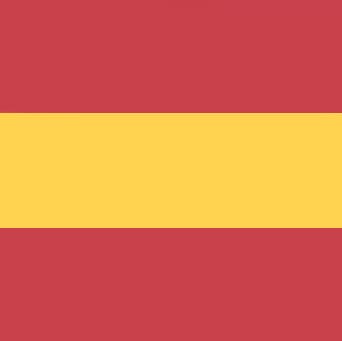
Camping in La Graciosa: An unforgettable adventure
Would you like to camp in the heart of nature? Are you looking for a unique experience surrounded by natural beauty? Would you like to disconnect from daily stress and enjoy the tranquillity of an extraordinary environment? If so, don’t hesitate: camp in La Graciosa!
La Graciosa is the eighth Canary Island, a small paradise of just 29 km², forming part of the Chinijo Archipelago Natural Park. Its golden sandy beaches, crystal-clear waters, volcanic landscapes, and serene atmosphere make it a perfect destination for nature and adventure enthusiasts.
Where is camping allowed in La Graciosa?
As a protected natural area, camping on La Graciosa is highly regulated. The El Salado campsite is the only authorised area for camping, situated on Playa El Salado, just a 15-minute walk from Caleta de Sebo, the island’s only village.
About El Salado campsite
- Capacity: The campsite has 50 pitches, each accommodating up to 10 people.
- Facilities: Showers and public toilets are available, but no grills or cooking utensils are provided.
- Restrictions: Open fires, including those with gas bottles or cookers, are strictly prohibited.
- Duration: The maximum stay is limited to 7 days.
- Permits: Camping is free of charge, but you must apply for a permit in advance through the National Parks Autonomous Body website.
How can you camp on the beach?
Camping on the beach at El Salado is an amazing experience, but there are a few recommendations to keep in mind to ensure everything goes smoothly:
Take a tent suitable for the island's climate, which can be very windy and changeable. We recommend that you secure it well with pegs and ropes, and choose a place sheltered by the dunes. A comfortable, warm sleeping bag is essential, as it can get cold at night. You could also use an inflatable mattress or mat for added comfort.
Bring enough water and food, as there is no food service at the campsite. Remember that you cannot cook or make a fire, so opt for food that does not require preparation or can be eaten cold. Don't forget to bring rubbish bags to collect your waste and leave the site clean.
Bring clothing and footwear suitable for the weather and the activities you want to do on the island. Don't forget a hat, sunglasses, sunscreen, and insect repellent. You will also need a torch, a compass, a map, and a fully charged mobile phone, in case you need to navigate or ask for help.
Respect the rules of the campsite and the Natural Park. Do not make noise or disturb other campers or the island's fauna and flora. Do not enter restricted areas or alter the landscape. Enjoy nature with respect and responsibility. Here you can consult the rules for the use of protected natural areas.
How many beaches are there in La Graciosa?
La Graciosa has several spectacular beaches, with fine sand and turquoise waters, that rival those of the Caribbean. Some of the most famous are:
La Cocina beach: located in the west of the island, it is one of the most beautiful and tranquil beaches on La Graciosa. Its crescent shape and protection by the volcano La Montaña Amarilla give it a magical charm. It is ideal for swimming and snorkelling, thanks to its crystal-clear waters and abundant marine life.
Las Conchas beach: situated in the north of the island, it is the largest and wildest beach on La Graciosa. Stretching about 600 metres, it is surrounded by dunes and cliffs. The waves are strong, and the wind often blows fiercely, so caution is advised when swimming. From this beach, you can enjoy views of Montaña Clara and the islet of Alegranza.
El Salado beach: found in the south of the island, this is the only beach with a designated camping area. It spans approximately 2 km and offers stunning views of the Riscos de Famara in Lanzarote. It is a peaceful family-friendly beach with shallow waters and golden sand.
How long does it take to travel around the island of La Graciosa?
The island of La Graciosa can be easily explored on foot, by bicycle, or by 4x4. There are no tarmac roads, only dirt tracks, so public transport is very limited. The best way to discover the island is by hiring a bicycle or booking a 4x4 tour, which will take you to the most interesting spots and provide fascinating insights into the history and curiosities of the island.
On foot, you can walk around the island in about 5 hours, following the coastal path. This route covers approximately 20 km and passes by the island’s main beaches and points of interest. It is advisable to bring water, food, suitable clothing and footwear, and to protect yourself from the sun and wind.
By bicycle, the same route can be completed in about 2 hours, depending on your pace and the stops you make. There are several places to hire bicycles in Caleta de Sebo, at very affordable prices. Cycling allows you to access areas that cannot be reached by 4x4, such as La Cocina beach or Montaña Amarilla.
By 4x4, you can take a guided tour of the island in about 3 hours, with several stops to enjoy the views and take photos. The 4x4 vehicles are adapted for driving on dirt tracks and can carry up to 8 people. Several companies offer this service, departing from Caleta de Sebo. Touring by 4x4 allows you to explore the island comfortably and effortlessly while learning more about its history and natural features.
What is the fine for free camping on La Graciosa?
Free camping is prohibited on La Graciosa, as it is a protected natural area. Camping is only permitted in the designated area of El Salado, with the appropriate permit. Failure to comply with this regulation may constitute a serious or very serious offence, according to the Law on the Conservation of Natural Spaces and Wild Flora and Fauna.
Penalties for free camping on La Graciosa range from €601 to €600,000, depending on factors such as the severity of the environmental damage caused, repeat offences, intentionality, or negligence. Additionally, authorities may require the restoration of the affected site, the removal of the tent, and the confiscation of the objects used.
If you wish to camp on La Graciosa, ensure you do so legally and responsibly by applying for a permit via the National Parks Autonomous Body website and respecting the rules of the campsite and the Natural Park. By following these guidelines, you will avoid fines and contribute to the conservation of this natural treasure.











